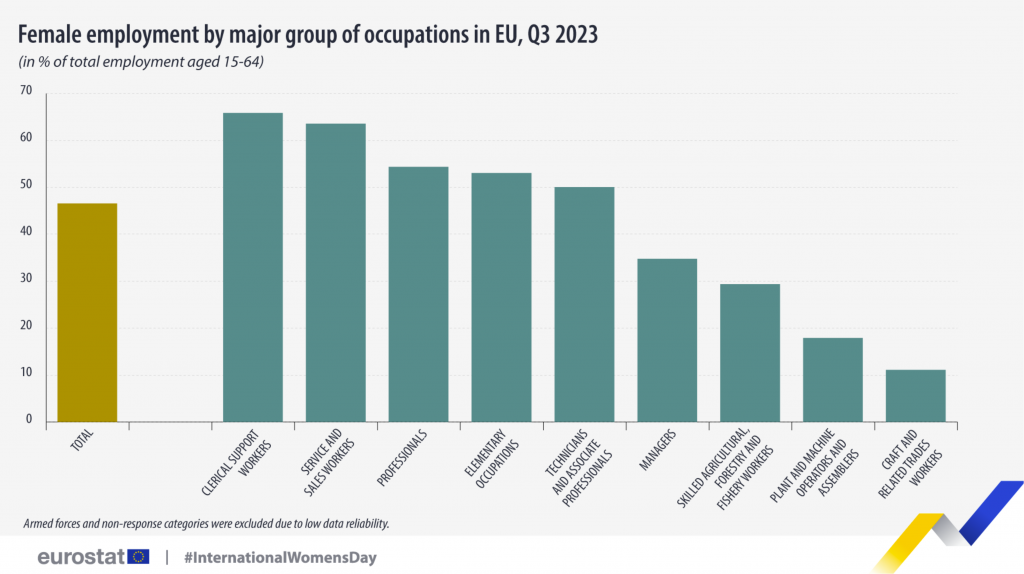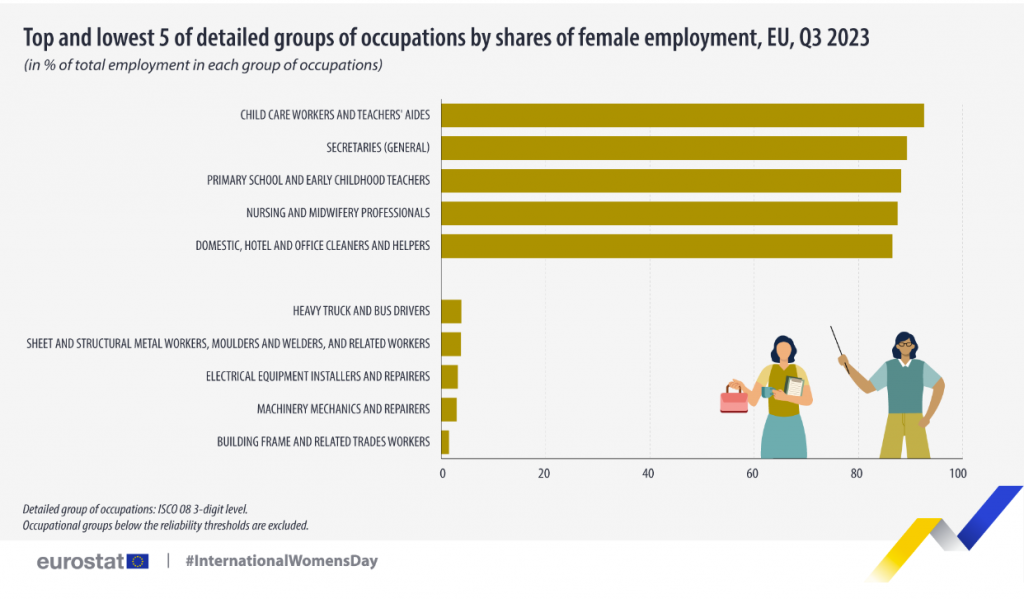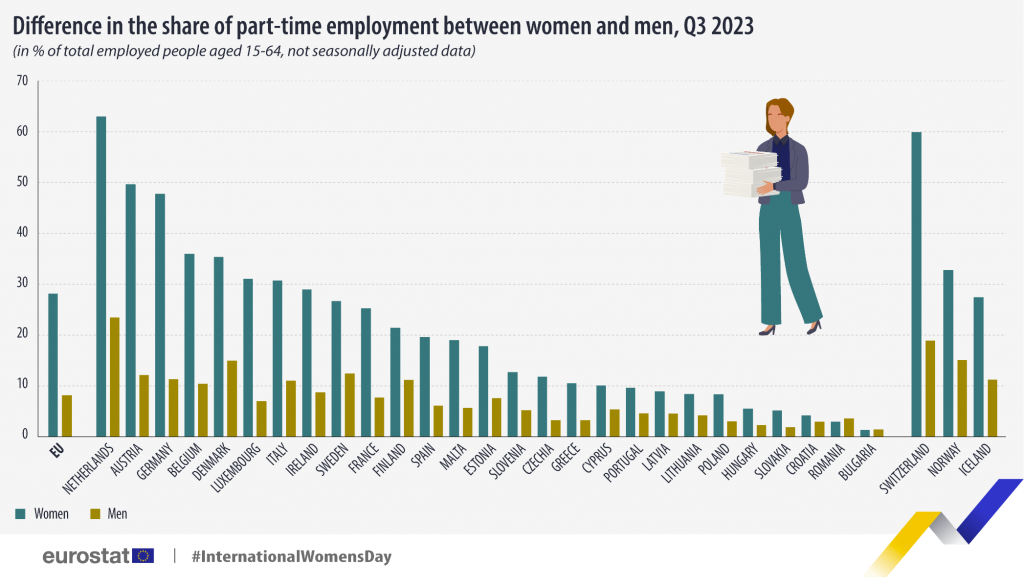A series of Eurostat reports released on the occasion of International Women’s Day reveal that many employment sectors in the European Union (EU) are still highly gendered, while women far outnumber men as part-time workers across almost all countries of the block.
Jobs with the Highest Shares of Women in the EU
In the third quarter of 2023, more males 15-64 years old were employed than females, 53.5% to 46.5% respectively. But looking more closely at sectoral data, it becomes clear that some jobs are overwhelming dominated by women.
Women have a greater share than men as clerical workers (65.8%), service and sale workers (63.5%), professionals (54.3%) and elementary occupations (53%). But technicians and associate professionals are split 50-50 between men and women.

However, the graft above by Eurostat shows that only 34.7% of managers were women, and very few women are employed as trade workers (11.1%) and plant and machine operators (17.9%).
The gendered nature of employment in the EU becomes even more evident when looking at a detailed classification of jobs. A remarkable 92.6% of childcare workers and teachers’ aides are women, followed by secretarial positions at 89.3%, early childhood and elementary teaching positions at 88.2%, nursing and midwifery professionals at 87.5%, and finally domestic, hotel, and office cleaners and helpers at 86.5%.

Females are rarely found as trade workers, truck and bus drivers, mechanics, electricians, and molders and welders, according to Eurostat.
Part-time Employment in the EU
In a separate but related report, Eurostat reveals that in Q3 of 2023, women aged 15-64 were more likely than their male counterparts to work part-time in almost all EU countries.
The only exception is in Romania, where men were slightly more likely than women to work part-time, and in neighboring Bulgaria, where the men and women were on par.
Shares of part-time employment is also gendered according to the sector, with the “largest difference between the shares of women and men part-time workers reported in the category ‘elementary occupations,’ referring to helpers, cleaners or food preparation assistants. The difference was 29 percentage points (pp), with 47% of women employed as part-time workers and 19% men. Among service and sales workers, 35% of women were employed part-time, compared with 16% of men. Among clerical support workers, 29% of women were employed part-time and 9% of men.”
Part-time Employment Shares in Greece
On a country level, data shows that the Netherlands had the highest share of women working part-time in Q3 2023, coming in at 63% of total employment against 23% for men, resulting in a 39 pp difference.
Big differences were also seen in Austria and Germany (38 and 37 pp respectively) while Greece shows around a 10 pp difference.

Previous reports at Eurostat have highlighted that Greece has the second widest gender employment gap across Europe, where 55.9% of the female population is employed.
When viewed at regional levels, Greece holds the unenviable position of first place for having the widest gender employment gap across all of Europe, in the central-Greece region of Sterea Ellada, where the gender gap is 31.4 pp.







